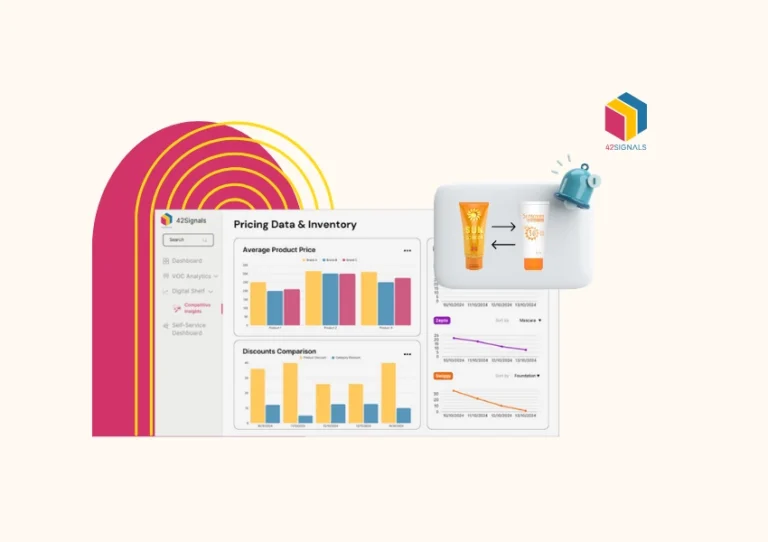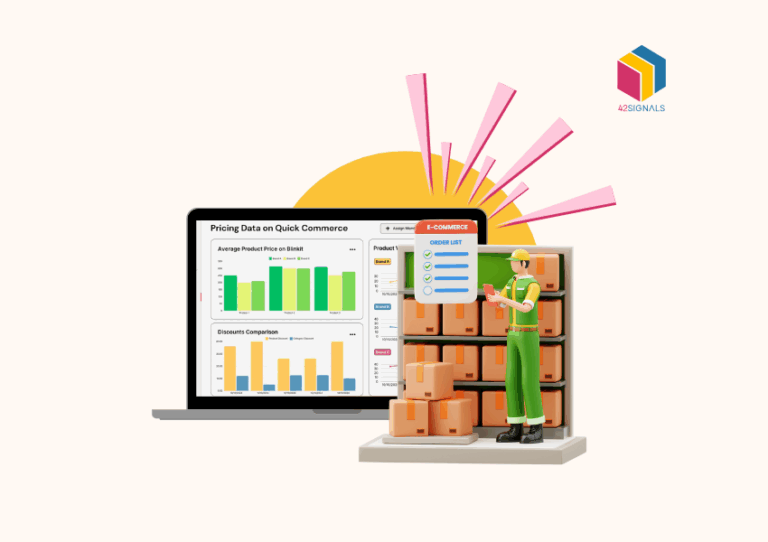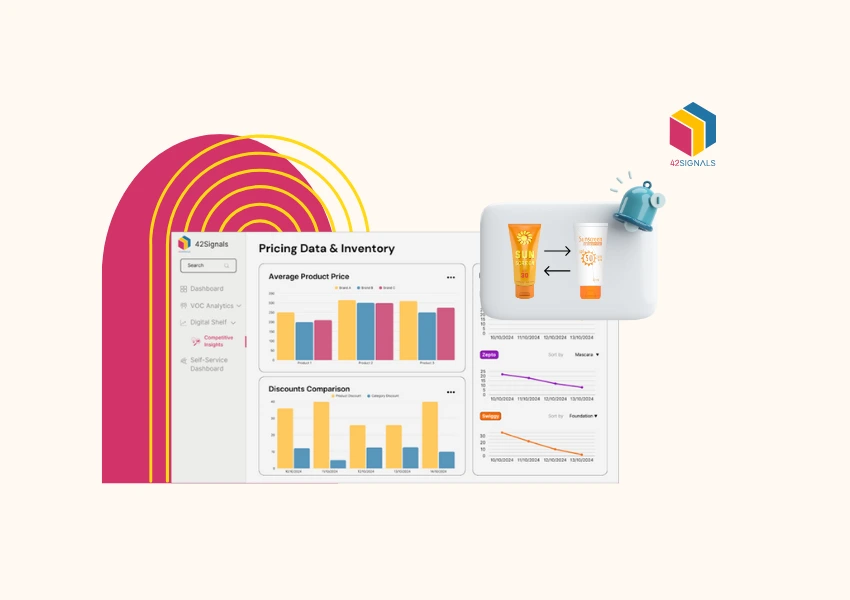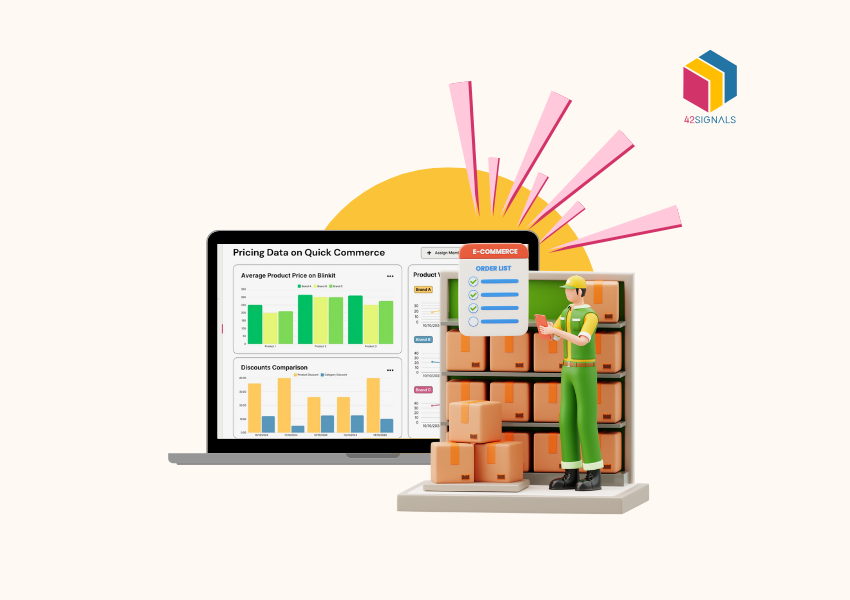Let’s Talk About Fast Commerce
Remember when waiting a week for online orders was normal? Those days are fading fast. Thanks to our “need it now” culture, a new player called fast commerce (or quick commerce) is shaking up online shopping.
It’s not just about faster deliveries—it’s changing how businesses track prices, manage inventory, and even compete. With instant price alerts and real-time data, the game is speeding up.

Image Source: Brinmile
So, What Exactly is Quick Commerce?
Imagine ordering snacks, medicine, or toilet paper and getting them in 10 minutes. That’s quick commerce.

Image Source: Ada Insights
Unlike regular e-commerce (which takes days), this model relies on tiny urban warehouses, smart logistics, and apps that know exactly where you are. The infrastructure is built on the backs of dark stores around the higher concentration of people in a given location.

Startups like Zepto, Blinkit and Swiggy’s Instamart have turned this into a science, using real-time tracking and clever algorithms to zip orders to your door. It’s like having a convenience store in your phone.
Dark stores allow these quick commerce businesses to reach wider audiences shopping for quick convenience and instant gratification. It could mean ordering essentials like medicines, groceries, dairy products, or non-essential items like snacks, clothing, electronics, and much more.
What Are The Driving Forces Behind Quick Commerce
Consumers are Impatient Now
Let’s face it: we’ve gotten used to one-click orders and same-day shipping. Mobile apps and digital wallets make buying stuff as easy as texting. Waiting? Not so much.
With this changing customer behavior and requirements, the way companies operate must also change.
Tech is Smarter
AI and machine learning help companies predict what you’ll buy next. Live price tracking lets them adjust deals on the fly—like if a competitor drops prices, they can too, instantly.
This combined with tools like 42Signals, understanding and incorporating changes on the quick commerce platforms is much faster and easier. Like the above example, small changes and drops in prices can be easily incorporated into the competing brand’s business model.
New trends and uptick in certain products being sold can also influence product selling strategies and the dispersion of inventory.
Cities are Delivery Hubs
More people in cities means companies can set up mini-warehouses downtown. Pair that with better delivery routes, and speed becomes possible.
Dark stores and their concentration in highly populated areas allow deliveries to be quicker, some under 10 minutes. Knowledge of what products are selling fast means inventory can be replenished quickly as per the demand.

Image Source: CNN
Products that do not sell in certain zip codes can also inform what consumers in that area want. This understanding is so valuable when looking at product availability and inventory management.
Keeping Up with the Big Guys
When Amazon offers two-hour delivery, smaller players have to step up. No one wants to lose customers because they’re slower.
While quick commerce took a few years to pick up, in the last 5 years, also – since the onset of Covid-19 – customers have become more open and less skeptical about ordering groceries and medicines online.
This shift on a large scale means swaths of orders to fulfill in short times, which created room for more players across pan India and the globe.
The Role of Ecommerce Analytics in Quick Commerce
Ecommerce analytics plays a critical role in making quick commerce efficient and scalable. Advanced data analytics tools allow businesses to track consumer behavior, optimize inventory, and enhance fulfillment strategies.
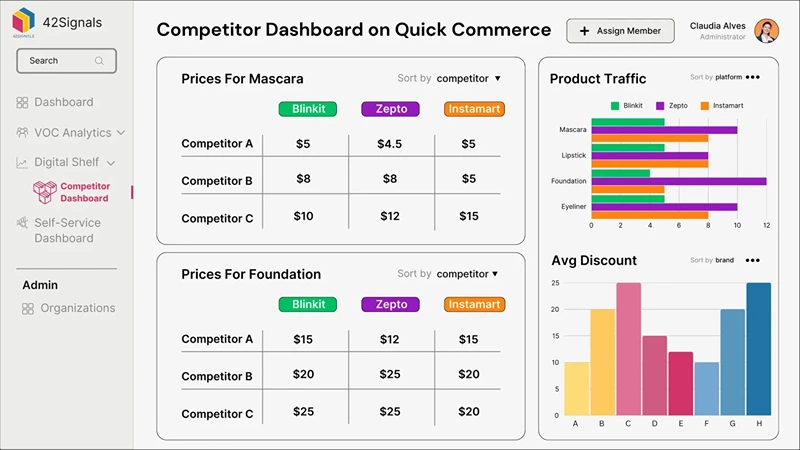
Some key aspects include:
Real-Time Demand Prediction
Stocking nearby warehouses with trending items means fewer delays. Understanding purchasing patterns allows businesses to stock high-demand products at strategically located warehouses, reducing fulfillment time.
Live Price Monitoring
Real-time price tracking lets them tweak prices without losing profits.
Monitoring competitor pricing in real time enables dynamic pricing updates, ensuring that businesses stay competitive without sacrificing profitability.
Instant Price Alerts
Automated alerts help businesses react swiftly to price fluctuations, ensuring they can adjust strategies proactively.
Customer Insights
Ever received a creepy-accurate product suggestion? Data-driven insights into customer preferences help in tailoring marketing efforts and improving overall customer experience.
Challenges of Quick Commerce
While q-commerce offers numerous benefits, it also presents significant challenges that businesses must navigate:
1. High Operational Costs
The need for rapid fulfillment, real-time inventory management, and last-mile logistics requires substantial investment in technology and infrastructure. Tools that alert brands about upcoming out-of-stock items need to be restocked before they sell out.
2. Sustainability Concerns
With increased deliveries comes a greater environmental footprint. Companies must balance speed with sustainable practices, such as eco-friendly packaging and electric delivery vehicles.
3. Logistics and Supply Chain Management
Ensuring a seamless supply chain in a fast-paced environment can be challenging, especially during peak demand periods.
4. Consumer Expectation Management
While instant gratification is a powerful selling point, meeting these expectations consistently is difficult. Any delays or service failures can lead to dissatisfaction and brand damage.
The Future of Quick Commerce
As technology continues to evolve, q-commerce is expected to become even more efficient and widespread. Future trends may include:
- AI-Powered Inventory Management – AI will further optimize stock levels based on predictive analytics, reducing waste and improving efficiency.
- Autonomous Delivery Solutions – Drones and self-driving vehicles could revolutionize last-mile delivery, making it faster and more cost-effective.
- Expanded Product Offerings – As the model matures, more industries will adopt quick commerce, including fashion, electronics, and home essentials.
- Greater Personalization – Businesses will leverage data analytics to offer personalized recommendations and deals, enhancing customer experience.
Wrapping It Up
Fast commerce isn’t a fad—it’s the new normal.
For businesses, staying relevant means investing in tech, data, and maybe a few drones. For shoppers? Enjoy the convenience, but don’t forget to recycle that packaging.
Understanding the data about quick commerce platforms is the first step to selling on these platforms. This means working with tools like 42Signals to know what products are selling, inventory in dark stores, how competitors are operating, and much more.

If you’d like to learn more about our application, sign up for a free trial.
Read our other articles on fast commerce –
The Rise of Quick Commerce: A New Era for Retail

